Disclaimer: The following is for informational purposes only and not financial advice. Always do your own due diligence.
SCHG or QQQM: Which Growth ETF is Best for Building Wealth in 2025?
When I first started learning about growth investing, I often wondered, “How do I choose the right ETF to grow my wealth long-term?” If you’ve asked yourself the same question, you’re not alone. Among all the best growth ETFs, two stand out for their consistent performance and wealth-building potential: QQQM and SCHG.
In this post, I’ll break down the benefits of investing in QQQM and SCHG, highlight the key differences between the two ETFs, and explain why long-term growth investing—combined with dividend reinvestment and compounding—can lead to massive wealth creation. I’ll also share my thoughts on which ETF might be better for your portfolio and how I use growth ETFs for retirement planning.
What Makes Growth Investing So Powerful?
Growth investing focuses on companies expected to expand faster than the overall market. When you invest in growth ETFs like QQQM vs SCHG, you’re essentially betting on innovative companies such as Apple, Amazon, Tesla, and Microsoft—businesses with high earnings potential and global market dominance.
But here’s the million-dollar question:
Would you rather chase short-term profits, or build a portfolio that compounds over decades to secure your retirement?
Growth ETFs are designed for long-term investing and can help you achieve financial freedom through capital appreciation, dividend compounding, and portfolio diversification.
The Benefits of QQQM ETF
The Invesco Nasdaq 100 ETF (QQQM) is one of my favorite growth funds because it gives me direct exposure to Nasdaq 100 stocks—a basket of 100 of the largest, non-financial companies listed on the Nasdaq exchange.
Key Advantages of QQQM:
-
Tech-Focused Growth – QQQM invests in tech leaders like Apple (AAPL), Amazon (AMZN), Nvidia (NVDA), and Alphabet (GOOGL). These companies have a history of delivering double-digit returns over the past decade.
-
Lower Expense Ratio – At 0.15%, QQQM is cheaper to own than its sibling fund, QQQ. Lower fees mean more of my money stays invested and compounds over time.
-
Dividend Income – While the dividend yield is modest (around 0.7–1%), it’s still an added source of passive income that I reinvest for additional shares.
-
Strong Historical Performance – Over the last 10 years, the Nasdaq 100 has outperformed the S&P 500 by a wide margin due to its focus on high-growth industries.
If you want exposure to AI stocks, cloud computing companies, and semiconductor giants, QQQM is a smart, long-term choice.
The Benefits of SCHG ETF
The Schwab U.S. Large-Cap Growth ETF (SCHG) is another gem I use for retirement investing. Unlike QQQM, SCHG isn’t limited to tech stocks—it’s a broad-based growth ETF that tracks the Dow Jones U.S. Large-Cap Growth Total Stock Market Index.
Key Advantages of SCHG:
-
Ultra-Low Expense Ratio – At just 0.04%, SCHG is one of the cheapest ETFs on the market. Low fees compound into big savings over 20+ years.
-
Sector Diversification – SCHG invests in companies across healthcare, industrials, consumer goods, and technology. This gives me a more balanced exposure to multiple growth industries.
-
Solid Dividend Yield – SCHG pays a small but consistent dividend (around 0.9%), which I reinvest to fuel long-term dividend compounding.
-
Reliable Performance – SCHG has delivered impressive returns over the last decade, often rivaling QQQM but with slightly less volatility.
SCHG or QQQM: What Are the Differences?
Both ETFs are excellent, but they cater to slightly different investor preferences. Here’s how they compare:
-
Index Focus: QQQM tracks the Nasdaq 100, while SCHG tracks the Dow Jones Large-Cap Growth Index, offering more sector diversification.
-
Fees: SCHG’s 0.04% expense ratio is cheaper compared to QQQM’s 0.15%.
-
Dividend Yield: SCHG typically has a slightly higher yield, making it better for reinvesting dividends.
-
Volatility: QQQM is more tech-heavy, which can lead to higher returns—but also higher risk.
So, which ETF is better? It depends on your strategy.
If you want pure technology exposure with massive upside, QQQM is a winner. If you prefer lower fees and broader diversification, SCHG is the smarter play.
The Importance of Dividend Income in Growth ETFs
You might be thinking: Why do dividends matter in growth ETFs?
Even though funds like QQQM and SCHG have low dividend yields, reinvesting those payouts can supercharge your portfolio through the power of compounding.
For example:
If I invest $10,000 in SCHG with a 10% annual return and reinvest dividends, I could have over $67,000 after 20 years—without ever adding another dollar.
Dividend reinvestment allows me to buy more shares every quarter, increasing both my income and capital gains over time.
Why Growth ETFs Are Perfect for Retirement Investing
I think of retirement investing as planting seeds today for a forest tomorrow. Growth ETFs like QQQM and SCHG are perfect for long-term retirement accounts like 401(k)s, IRAs, and Roth IRAs because:
-
High Capital Appreciation: Growth stocks tend to outperform value stocks over decades.
-
Low Turnover: ETFs are tax-efficient, especially when held in retirement accounts.
-
Dividend Reinvestment: Even small dividends contribute to compounding wealth over time.
Imagine retiring with a portfolio that grew 4–5x simply because you stayed invested in high-growth ETFs for 20+ years. That’s the magic of long-term compounding.
Which ETF Belongs in Your Portfolio?
If I had to choose just one ETF, here’s my take:
-
Choose QQQM if: You want heavy tech exposure and are comfortable with slightly higher volatility in exchange for higher potential returns.
-
Choose SCHG if: You want broad growth exposure with ultra-low fees and a slightly more conservative profile.
My portfolio? I own both. By blending QQQM and SCHG, I get the best of both worlds—cutting-edge tech exposure and diversified growth stocks.


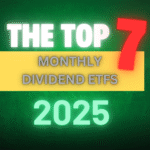
![Is SCHD Dead Weight — Or the Ultimate Dividend Machine? [2025 Guide]](https://portfoliopayday.com/wp-content/uploads/2025/08/SCHD-Thumbnail-150x150.png)
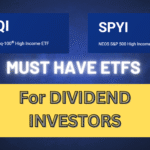


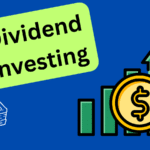
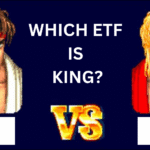

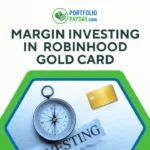
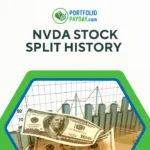

[…] SCHG 2025 Total Return (YTD): +8.65 […]